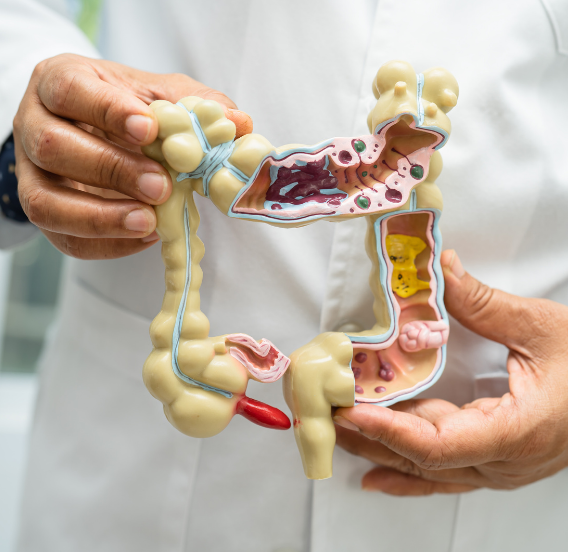Hemorrhoid Treatment
Hemorrhoids are a condition that occurs when the veins around the anus and rectum become swollen and enlarged. Commonly known as piles, hemorrhoids are classified into two types:
- Internal Hemorrhoids: Located inside the rectum and are usually painless. However, they may present with bleeding.
- External Hemorrhoids: Develop under the skin around the anus and can cause discomfort such as pain, swelling, and itching.
Hemorrhoids can develop as a result of conditions such as constipation, prolonged sitting, heavy lifting, or pregnancy. Different treatment methods are applied depending on the severity of the hemorrhoids.

What Is Internal Hemorrhoid?
Internal hemorrhoids are clusters of veins located inside the anus and are not visible externally. Typically, they are found in the 3, 7, and 11 o’clock positions when lying on the back. Factors such as constipation, chronic diarrhea, poor nutrition, and alcohol consumption can cause these veins to swell. The earliest sign of internal hemorrhoids is bleeding, which is usually painless and occurs after a bowel movement. As the condition progresses, symptoms like prolapse (protrusion) and bleeding may appear.
What Is External Hemorrhoid?
External hemorrhoids form under the skin around the anus and often result in sudden swelling. This swelling is usually painful and may be accompanied by itching, discomfort, and inflammation in the anal region. Contributing factors include excessive straining, prolonged diarrhea, and extended periods of sitting. If left untreated, the swelling may gradually soften and disappear. However, early treatment can prevent recurrence.
Stages of Hemorrhoids
Hemorrhoids are classified into 4 stages based on their severity:
-
Stage 1: No visible bleeding or prolapse.
-
Stage 2: Bleeding occurs; prolapse may be present but retracts on its own.
-
Stage 3: Prolapsed hemorrhoids can be manually pushed back in.
-
Stage 4: Hemorrhoids remain outside and cannot be manually retracted.
Symptoms of Hemorrhoids
The most common symptoms of hemorrhoids include:
-
Bleeding: Usually appears as drops of blood after bowel movements, especially common in internal hemorrhoids.
-
Prolapse (Swelling): Occurs when internal hemorrhoids protrude from the anus; the degree of prolapse indicates the disease stage.
-
Pain: Particularly in thrombosed external hemorrhoids; typically occurs during or after defecation.
-
Itching: Caused by discharge due to external hemorrhoids, leading to irritation in the anal area.
Diagnosis of Hemorrhoids
Diagnosis is typically made through a physical examination. An anoscope may be used to assess internal hemorrhoids. Additionally, advanced tests such as colonoscopy may be recommended to rule out conditions like colorectal cancer.
Treatment Options for Hemorrhoids
Medical Treatment:
Focuses on symptom relief through dietary adjustments, improved bowel habits, and medications. These medications enhance venous circulation and strengthen vein walls.
Surgical Treatment:
If symptoms persist despite medical treatment, surgical options may be necessary. These include:
-
Laser Hemorrhoid Treatment: Uses laser energy to coagulate blood vessels, reducing the size of the hemorrhoid. It is typically painless and offers a fast recovery.
-
Rubber Band Ligation: A rubber band is placed at the base of the hemorrhoid to block blood flow, causing it to shrink. Suitable for early-stage hemorrhoids.
-
Hemorrhoidal Artery Ligation (HAL): Involves locating and tying off hemorrhoidal arteries using Doppler ultrasound. A minimally invasive method with rapid recovery.
-
Conventional Hemorrhoidectomy: Surgical removal of hemorrhoidal tissue, usually under general anesthesia. Recommended for advanced-stage hemorrhoids.
-
Doppler-Guided Laser Procedure (HeLP): Identifies and treats hemorrhoidal arteries using laser under Doppler guidance, offering a fast recovery process.
Each treatment method should be chosen based on the patient’s condition. The approach depends on the severity of the symptoms and the patient’s overall health status.
TREATMENTS

